Dealing With The Product Discovery Hype (Pt. 2) – How To Start Carefully
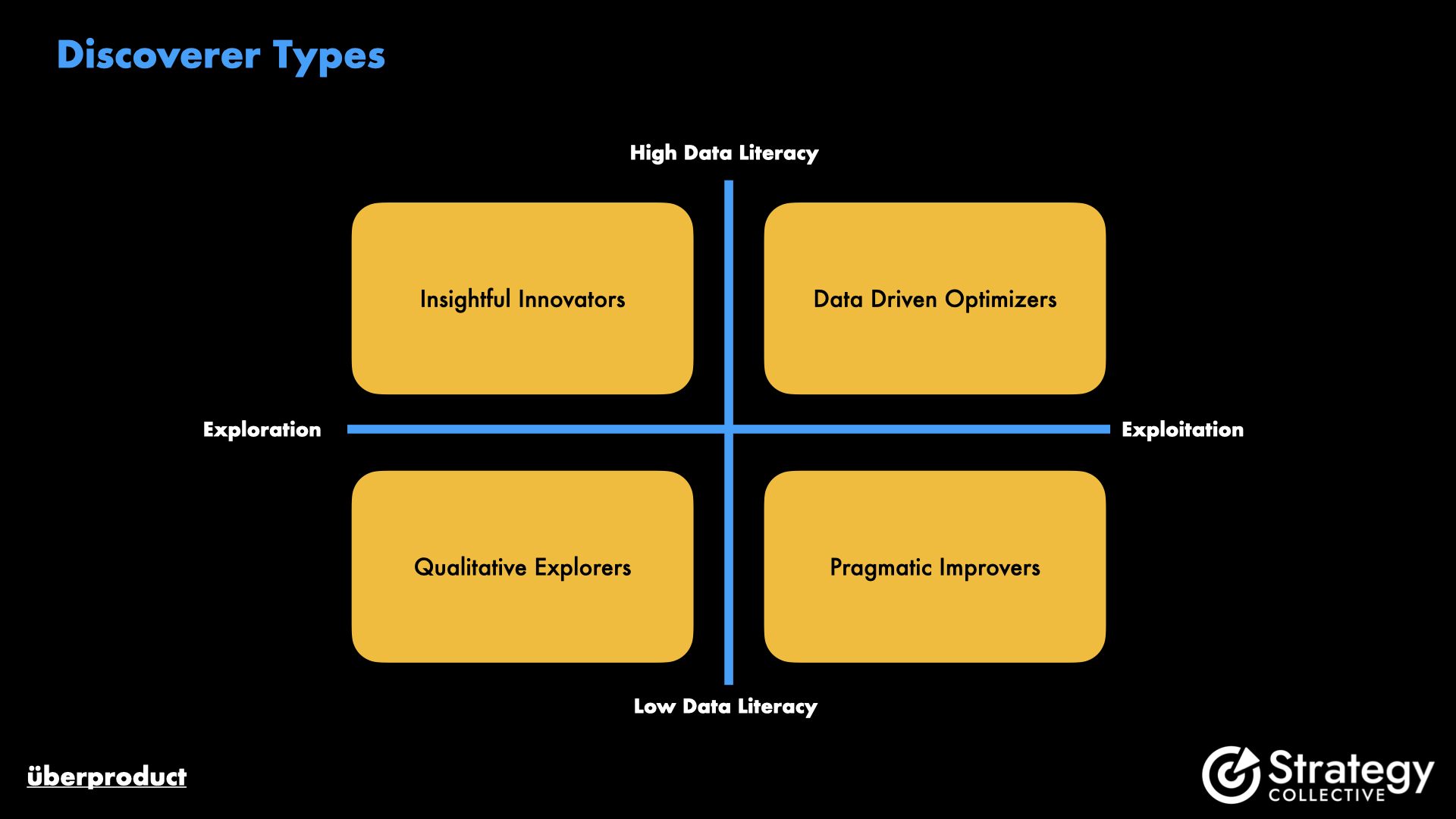
Part 1 of this mini series mentioned the quirks and challenges and obstacles that teams will be confronted with when starting the journey of (continuous) product discovery. Therefore, rather than starting out, whatever opportunity you think you already have in front of you, I’d rather give you the advice to make “learning about the customer” your “simple” and humble first promise. It’s very hard to start discovery and not learn about the customer, it’s very easy to fail at economic outcome right away, though. If you are a daredevil, do whatever, of course. Setting the goal to better understand your customers is not only achievable but also crucial for longterm success. I’d also recommend to start in a low attention stealth mode, by simply setting up a very specific customer question you have, form a bit of a – however you want to call it – “coalition of the willing” (Kotter style) or a community of practice. One way to initiate either is by gathering a small, cross-functional group of colleagues who are equally inherently interested in learning more about the customer. Start with informal meetings where you share insights, discuss challenges, and collaborate on small, low-risk projects that focus on understanding the customer’s needs and pain points. Maybe, first have a coffee on that topic! As simple as that! This approach fosters a culture of continuous learning and builds a support network that can evolve into a more formalized community over time. By embedding this practice into your discovery process, you create a shared space for exchanging ideas and developing collective expertise in customer discovery. The remainder of this part of the mini series will introduce a quadrant to offer a system of “what kind of org are we working in” to then help you based on that to find a good first type of problem to work at.
Focus on Learning First
I’ll talk about how to get started real soon, but first, we need some basics. So here some types of environment / discovery work combinations you have to understand and chose from before you get started.
Introducing the Quadrants
To navigate the complex landscape of product discovery, it’s helpful to categorize your approach based on two dimensions: Data Literacy and Focus (Exploration vs. Exploitation). These dimensions form four quadrants, each representing a different strategy for starting your learning journey:
- Qualitative Explorers (Low Data Literacy + Exploration)
- Insightful Innovators (High Data Literacy + Exploration)
- Pragmatic Improvers (Low Data Literacy + Exploitation)
- Data-Driven Optimizers (High Data Literacy + Exploitation)
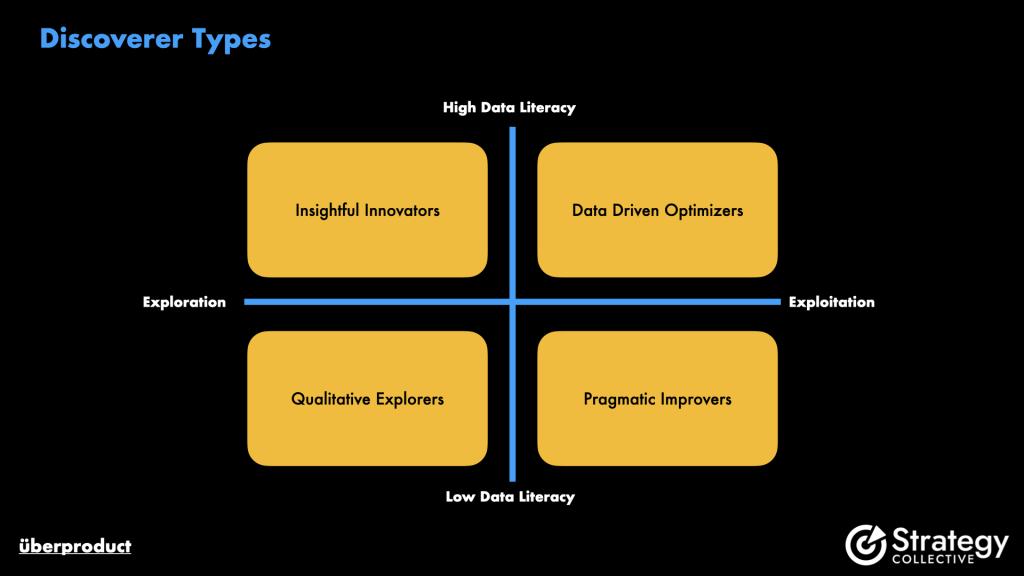
Understanding which quadrant your team fits into can help tailor your learning efforts and set appropriate expectations.
A bit of an explanation on the dimensions:
Exploration is about finding new features / products, focusing on new customer needs. This will mainly deal with qualitative data and thus, in most cases, is work that most people are not used to and your environment will not be used to reasoning about low sample sizes of qualitative data. It can be tough.
Exploitation is mostly about exploiting or optimizing your current offerings by finding product flywheels, improving the existing functionality and other means. You navigate this space mostly by quantitative data, higher sample sizes and humans are more used to qualitative reasoning. Still, often opinions rule.
The other dimension differentiates between:
Low data literacy, meaning an environment that is not used to argue around data that mich and thus probably also is weak regarding data infrastructure and data scientists helping you with understanding the existing data.
High data literacy, which is an environment that is used to discuss and reason in terms of data and thus often times already has a good enough data infrastructure and also data scientists helping you understand existing data.
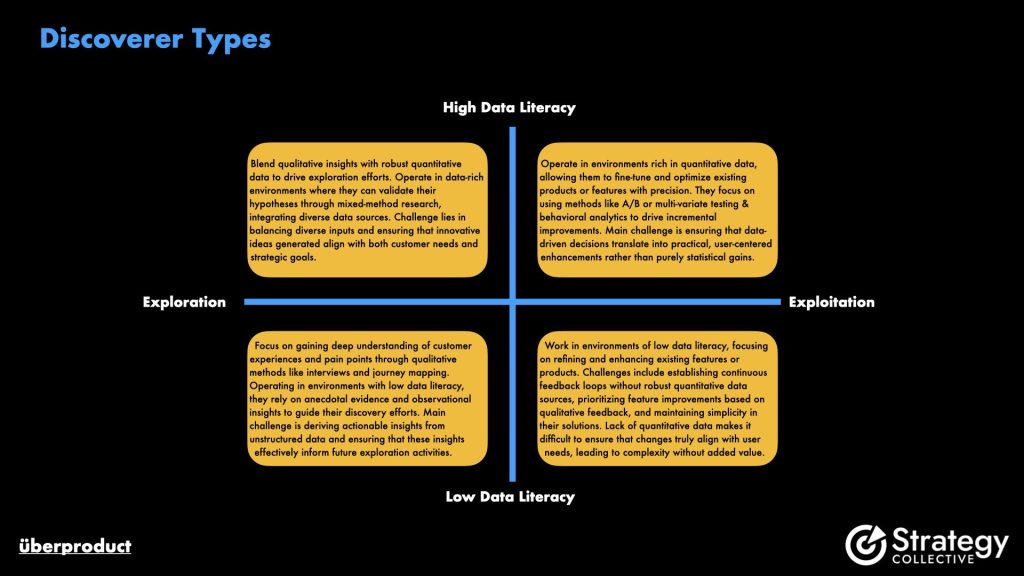
Description of Types
You read my warning: Even high data literacy environments often have a hard time dealing with low sample sizes and qualitative data. I can only recommend to read up on the boundaries and use of qualitative data and softly, very softly educate people around you with that knowledge.
Why Focus on Learning First?
Here why I would only very hesitantly promise any outcome in the beginning, but rather focus on learnings about the customer.
Achievable Goals:
- Realistic Expectations: Prioritizing customer understanding sets a goal that is both manageable and achievable. This initial focus allows your team to make incremental progress without the pressure of delivering immediate product success.
- Foundational Knowledge: Gaining deep insights into customer needs and pain points provides the groundwork for all future discovery and development efforts.
Build Confidence:
- Early Wins: Successfully gathering and interpreting customer insights boosts your team’s confidence and motivation. These early wins create positive momentum for further activities.
- Informed Decision-Making: A better understanding of your customers enables more informed decisions that align with actual user needs and preferences.
Identify Barriers:
- Spotting Challenges Early: Focusing on learning helps uncover potential barriers and unsolvable issues early on, allowing proactive management.
- Strategic Adaptation: Addressing barriers early ensures smoother transitions to more complex discovery efforts.
Challenges in Each Quadrant
Each quadrant presents its own set of challenges that teams need to navigate:
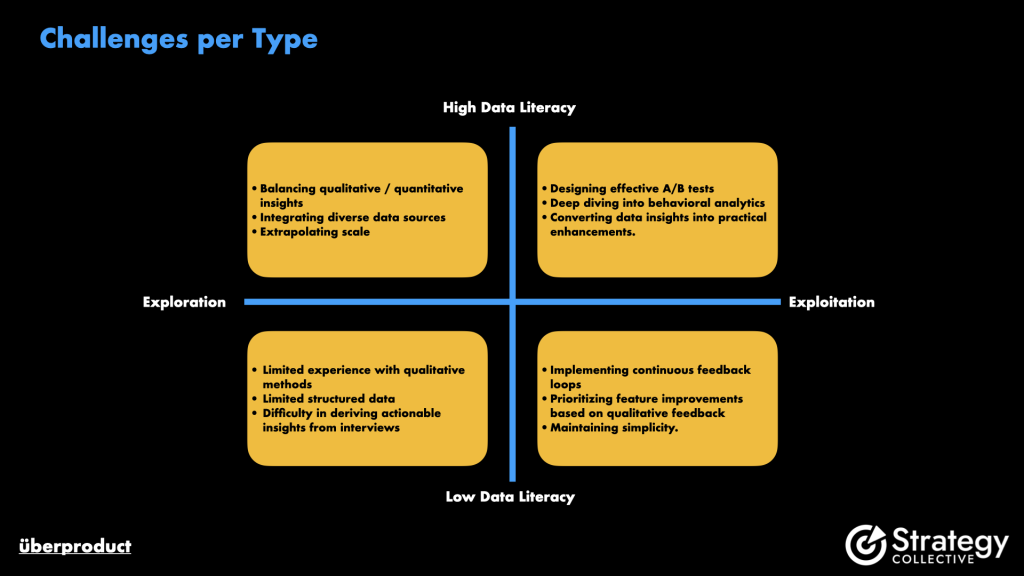
Starter Projects for Different Quadrants
Using the quadrants of data literacy and focus, here are some starter projects as a suggestions to help your community of practice begin with customer learning. Please make sure to always always always pick a very very concrete problem in the beginning. It will make your work much easier and raises the odds for success but also improves your feeling of accomplishment.
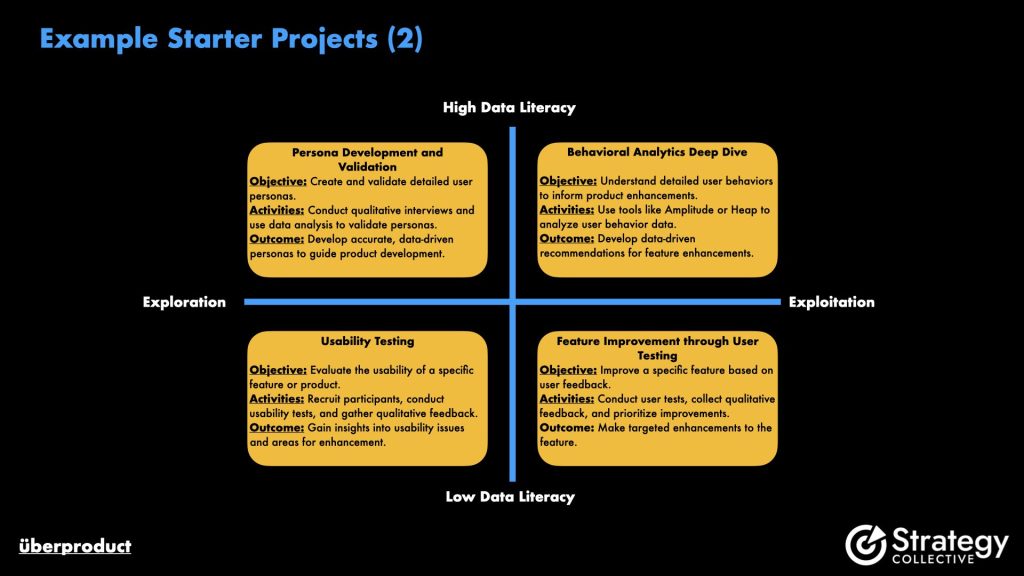

Finally
Starting with learning about your customers as initial goal in (continuous) product discovery sets realistic expectations and creates better odds for initial success. This supports developing a customer-centric mindset and helps you discover potential barriers and challenges early on. If they are too big to be challenged, you can always retreat and retreat with already a useful learning. If everything works out fine, cool: go for more impactful and successful product discovery efforts in the next iteration. It’s never too late, but you will not explode like a supernova in your first effort.
Embrace learning about your customers first, be patient and use these insights to then follow up towards more and more effective product discovery.